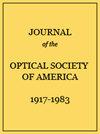Collective Thomson scattering diagnostic with in situ calibration system for velocity space analysis in large helical device.
Journal of the Optical Society of America and Review of Scientific Instruments
Pub Date : 2022-05-01
DOI:10.1063/5.0079296
引用次数: 0
Abstract
A collective Thomson scattering (CTS) diagnostic with a ±3 GHz band around a 77 GHz gyrotron probe beam was developed to measure the velocity distribution of bulk and fast ions in high-temperature plasmas. We propose a new in situ calibration method for a CTS diagnostic system combined with a raytracing code. The method is applied in two situations for electron cyclotron emission in plasmas and in a CTS diagnostic with a modulated probe beam. Experimental results highlight the importance of refraction correction in probe and receive beams. The CTS spectrum is measured with the in situ calibrated CTS receiver and responds to fast ions originating from a tangential neutral beam with an energy of 170 keV and from a perpendicular beam with an energy of 60 keV, both in the large helical device. From a velocity space analysis model, the results elucidate the measured anisotropic CTS spectrum caused by fast ions. The calibration methods and analyses demonstrated here are essential for CTS, millimeter-wave diagnostics, and electron cyclotron heating required under fusion reactor conditions.大型螺旋装置速度空间分析现场标定系统的集体汤姆逊散射诊断。
在77 GHz回旋管探测波束周围±3 GHz波段建立了集体汤姆逊散射(CTS)诊断系统,用于测量高温等离子体中大块离子和快离子的速度分布。提出了一种结合光线追踪码的CTS诊断系统原位标定方法。该方法应用于等离子体中电子回旋发射和调制探针束CTS诊断两种情况。实验结果强调了探测和接收光束的折射校正的重要性。CTS光谱是用原位校准的CTS接收器测量的,并响应来自能量为170 keV的切向中性光束和能量为60 keV的垂直光束的快速离子,两者都在大型螺旋装置中。从速度空间分析模型出发,分析了快离子引起的CTS谱的各向异性。这里演示的校准方法和分析对于CTS,毫米波诊断和聚变反应堆条件下所需的电子回旋加速器加热是必不可少的。
本文章由计算机程序翻译,如有差异,请以英文原文为准。
求助全文
约1分钟内获得全文
求助全文

 求助内容:
求助内容: 应助结果提醒方式:
应助结果提醒方式:


